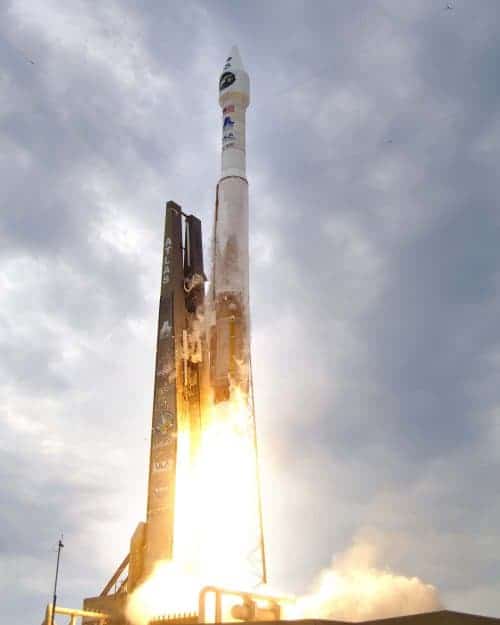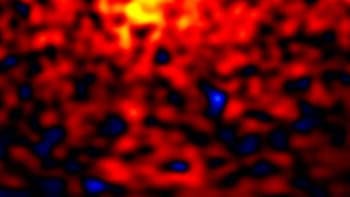
Is there water on the Moon — and where is the best place to build a lunar base? These and other questions about our nearest neighbour could soon be answered by two unmanned missions that blasted off yesterday from Cape Canaveral in Florida.
NASA’s Lunar Reconnaissance Orbiter (LRO) and Lunar Crater Observation and Sensing Satellite (LCROSS) took off at 17:32 local time aboard the same Atlas V rocket. Both probes are expected to reach lunar orbit on 23 June.
The LRO is a $500m satellite that will produce maps of the Moon’s surface with the highest resolution yet. Costing $80m, LCROSS should crash into the Moon on 9 October in order to study its composition.
The missions are important precursors to NASA’s Constellation programme, which aims to send astronauts to the Moon and to create a lunar outpost as a stepping stone for a trip to Mars. As well as determining if water or other useful substances can be found on the Moon, the missions could help identify possible sites where a future manned mission could land.
Unseen details
We probably won’t be able to see the [US] flag. But we should be able to image what the Apollo astronauts left behind Richard Vondrak, NASA
The LRO will orbit 50 km above the lunar surface. It will have seven onboard instruments, including a camera that will map the Moon with a resolution of about 50 cm, revealing previously unseen details. “We probably won’t be able to see the [US] flag,” says Richard Vondrak, project scientist on the LRO and deputy director of NASA’s solar system exploration division. “But we should be able to image what the Apollo astronauts left behind, including the landing zones.”
To produce the lunar maps, the camera will be aided by an altimeter that will measure the gradients of slopes using five lasers beams. Also in preparation for future manned missions, a cosmic–ray telescope will measure the radiation exposure that crew members would receive once they had arrived at the Moon.
In order to remain in orbit, the LRO will need a short boost from its fuel tank every two weeks to stop it from crashing into the lunar surface. Once the fuel runs out after 15–18 months, the LRO will go to a higher orbit where it will operate for a further three years. “With more funding we could even continue doing measurements in a high orbit for up to 10 years,” says Vondrak.
Cold traps?
The remaining four instruments on board the LRO are all dedicated to finding water on the Moon. A radiometer will measure the temperature of the lunar surface to identify cold traps where water ice could exist. An instrument to measure the surface in the ultraviolet will search for surface frost in the polar regions, which is thought to be the best candidate location for water ice to be found. The third is a neutron detector and the only foreign-based instrument on board, having been built at the Russian Space Institute in Moscow. It will create a map of hydrogen deposits on the Moon with a resolution as fine as 10 km. The final instrument is a radar to image the polar regions.
“With these instruments, we will be able to detect hydrogen deposits down to a depth of 2 m,” says Vondrak, “possibly revealing, for example, if it is possible to extract the material and use it as propellant or fuel for a lunar base.”
LCROSS, will also try to discover whether the Moon has water. But while the LRO will enter a circular orbit around the Moon, LCROSS and the Centaur upper stage of the launch rocket will separate off and go into a highly elliptical orbit, initially moving away from the Moon and taking four months to return.
Best crash sites
This will give the LRO time to roughly map the best possible crash sites in the polar regions that could harbour water before LCROSS arrives back. When that happens, the Centaur will crash into the Moon four minutes before LCROSS arrives. As the Centaur hits the surface, it will gouge a 20 m crater into the lunar surface, throwing up a plume of dust that LCROSS will travel through.
With its three spectrometers, three cameras and radiometer, the mission will measure the dust for water content and transmit the data back to Earth before it too smashes into the surface. Although other missions have already found evidence for water ice, as yet there is no smoking gun.



